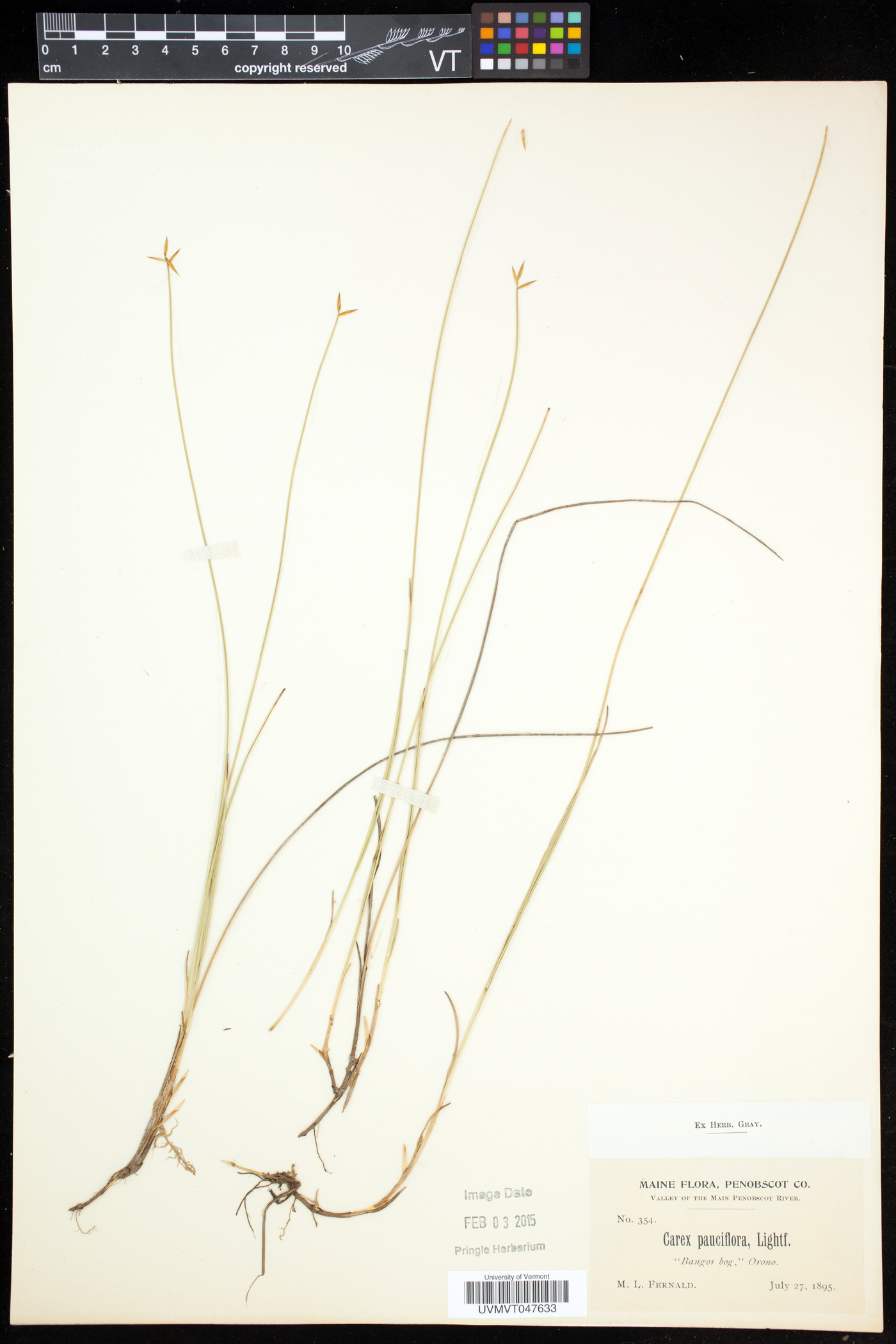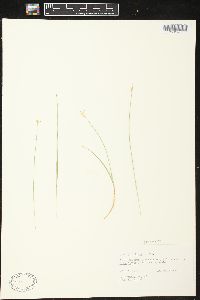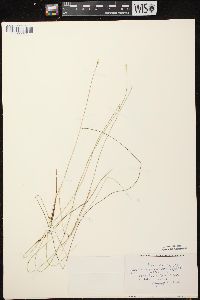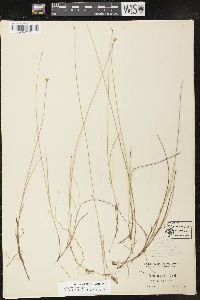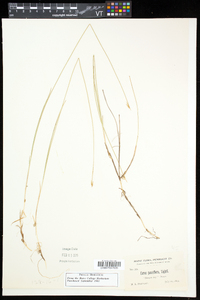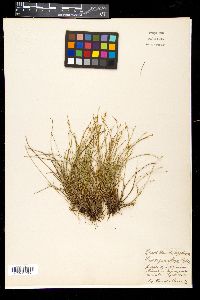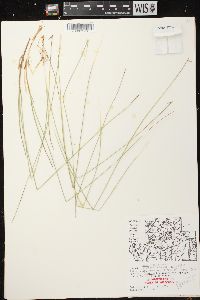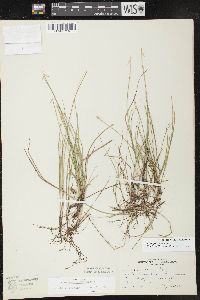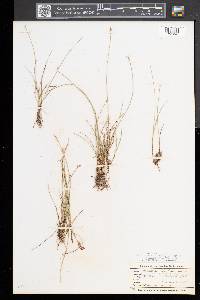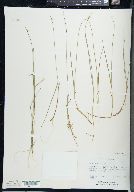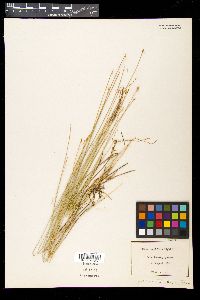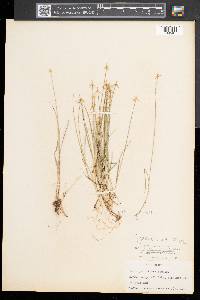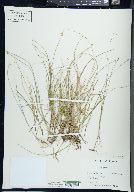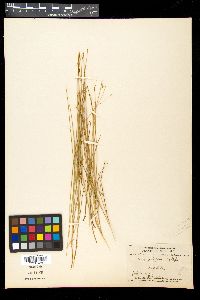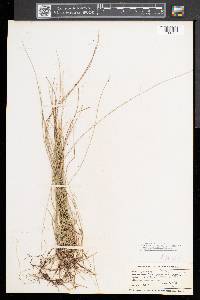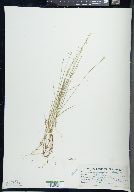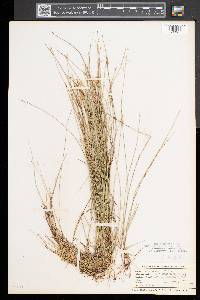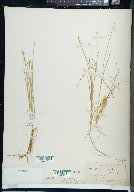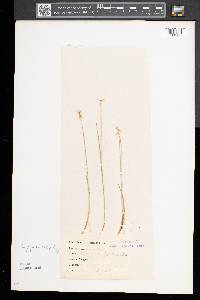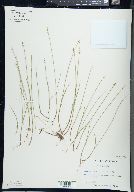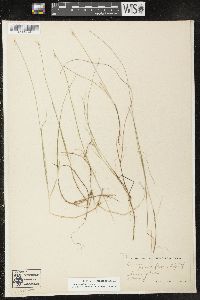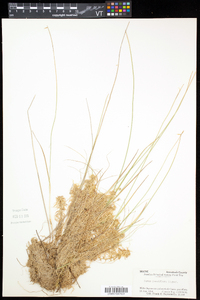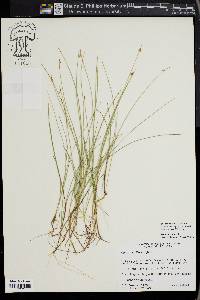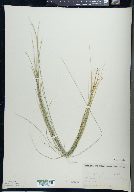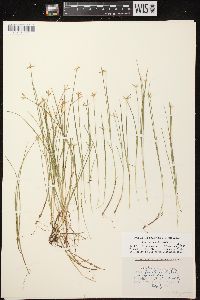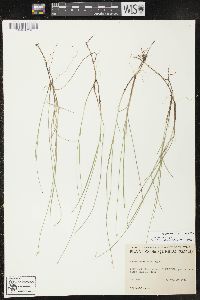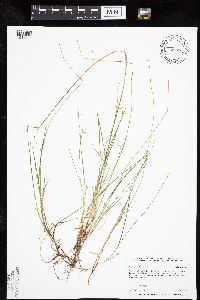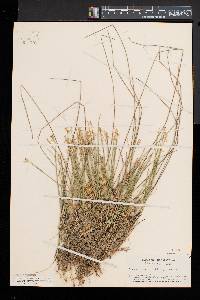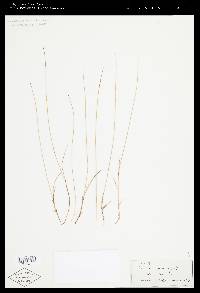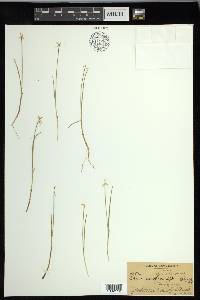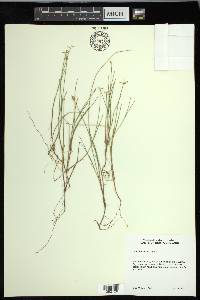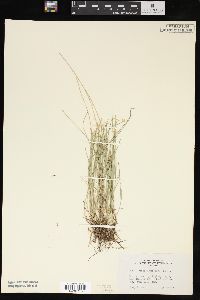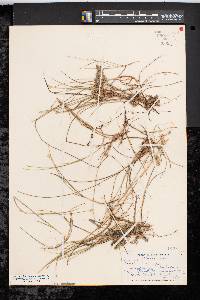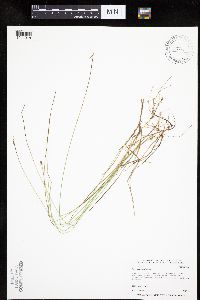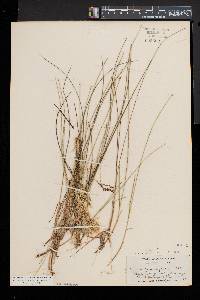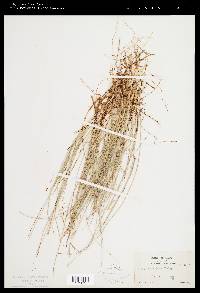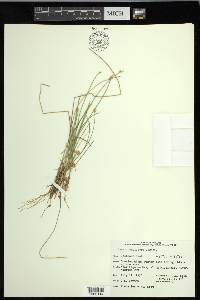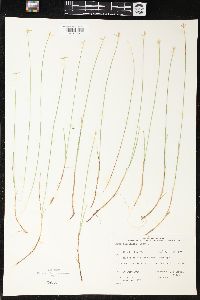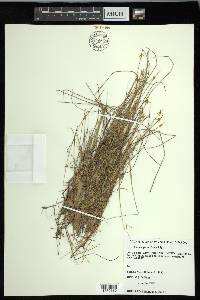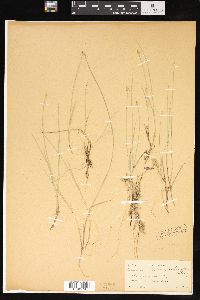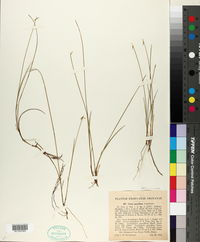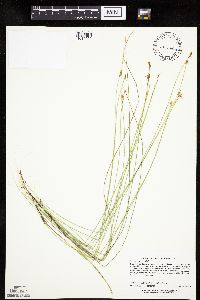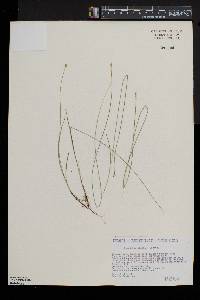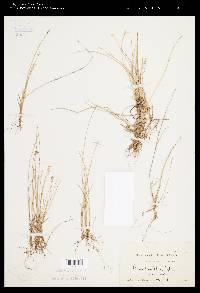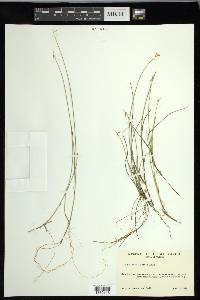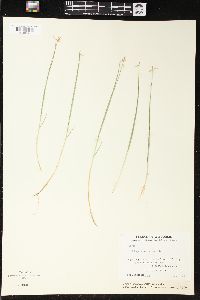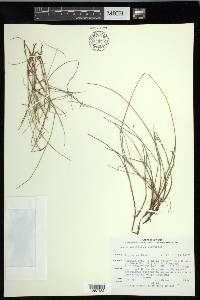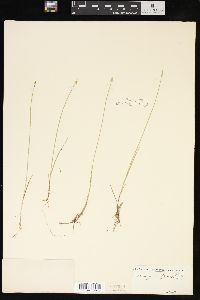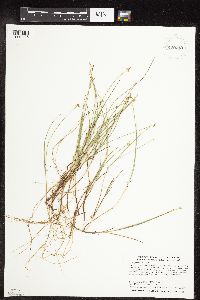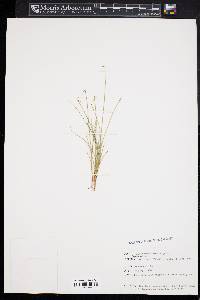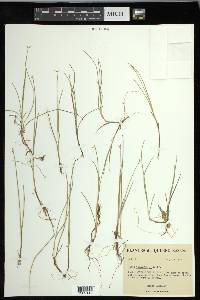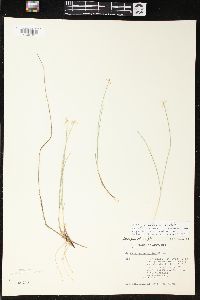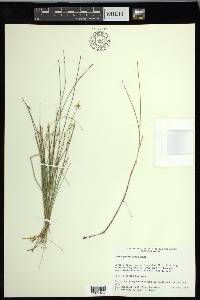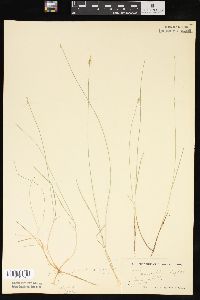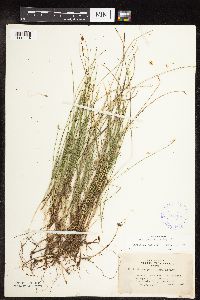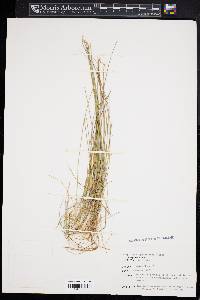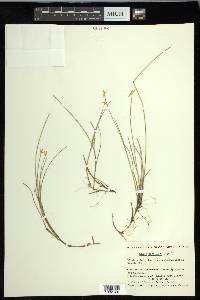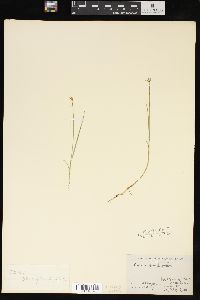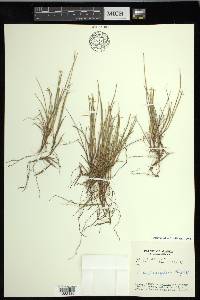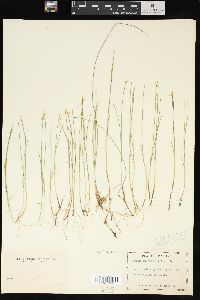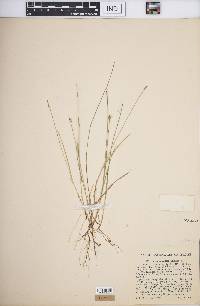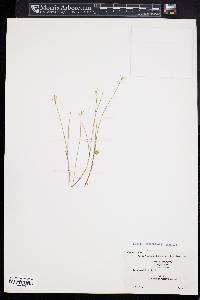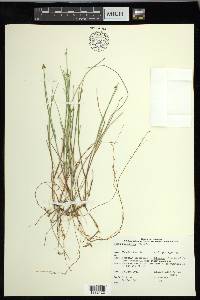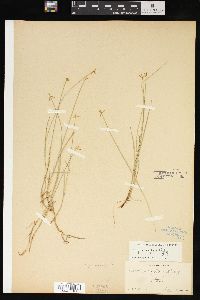Carex pauciflora
|
|
|
|
Family: Cyperaceae
Few-Flower Sedge
[Carex leucoglochin L.f.] |
Rhizomes 0.2-10 cm, 0.6-1.2 mm in diam. Culms arising singly or in loose tufts of 2-6(-12), 10-40(-60) cm, apically slightly scabrous. Leaves: proximal 1-4 reduced to bladeless or nearly bladeless sheaths; foliage leaves 1-2(-3) per culm; ligules about as wide as long; blades mostly 1-3 (proximal blade) or 5-13 (distal) cm × 0.5-1.6 mm. Spike consisting of slender terminal cone of (1-)2-4 staminate flowers and (1-)2-6(-7) pistillate flowers, 3-10 (often 5-8) × 2-8 (immature fruit) or to 17 (mature fruit) mm. Pistillate scales 3.7-5.9 mm, wider than and 2/3 length of perigynia. Staminate scales closely appressed. Perigynia light green, becoming straw colored or pale brown, lance-subulate to narrowly elongate-oblong, (5-)5.9-7.8 × 0.7-1.1 mm, long-tapering; beak indistinct; rachilla vestigial. Achenes 2-2.4 × 0.8-1 mm; style exserted 0.2-1.3 mm beyond orifice of beak. 2n = ca. 74, 76. Fruiting summer-fall (late May-early Sep). Sphagnum bogs and acidic peat (damp mossy tundra, dryish heaths, alpine quagmires, moist forests), usually on open mats, also in partial shade of conifers; 0-1500 m; St. Pierre and Miquelon; Alta., B.C., Man., N.B., Nfld. and Labr., N.S., Ont., Que., Sask., Yukon; Alaska, Conn., Maine, Mass., Mich., Minn., N.H., N.Y., Pa., Vt., Wash., W.Va., Wis.; n Eurasia. Carex pauciflora is sometimes confused with C. microglochin, though C. pauciflora is easily distinguished by the lack of an evident rachilla. Compared to C. microglochin, the shoots of C. pauciflora tend to be more definitely tufted, the culms are more sharply 3-angled and roughened distally, and the achenes fill less of the perigynia. Carex pauciflora has a catapult dispersal mechanism (E. E. Hutton 1976) in contrast to the putative clinging mechanism of C. microglochin and presumably C. camptoglochin V. I. Kreczetowicz and C. parva Nees (see comments under the previous species). Dispersal by animals is possible for C. pauciflora as well. People walking through bogs may find perigynia attached to their clothing (L. Brouillet, pers. comm.).
Stems solitary or few together from long slender rhizomes, 1-4 dm, aphyllopodic; main lvs 1-2 mm wide, shorter than the culm; spike 1, bractless, to 1 cm; staminate scales closely infolded into a slender terminal cone; pistillate scales lanceolate, 4-6 mm, pale brown, soon deciduous; perigynia few, mostly 1-6, soon deflexed, deciduous at maturity, light green, becoming stramineous or pale brown, finely several-nerved, 6-7.5 mm, slender and long-tapering, spongy at base, nearly round in section; achene trigonous, not filling the perigynium, continuous with the exserted, persistent style; rachilla obsolete; 2n=46, 76. Sphagnum-bogs; circumboreal, s. to Conn., Pa., W.Va., Mich., Minn., and Wash. Gleason, Henry A. & Cronquist, Arthur J. 1991. Manual of vascular plants of northeastern United States and adjacent Canada. lxxv + 910 pp. ©The New York Botanical Garden. All rights reserved. Used by permission. From Flora of Indiana (1940) by Charles C. Deam ...... Indiana Coefficient of Conservatism: C = 10 Wetland Indicator Status: OBL |

